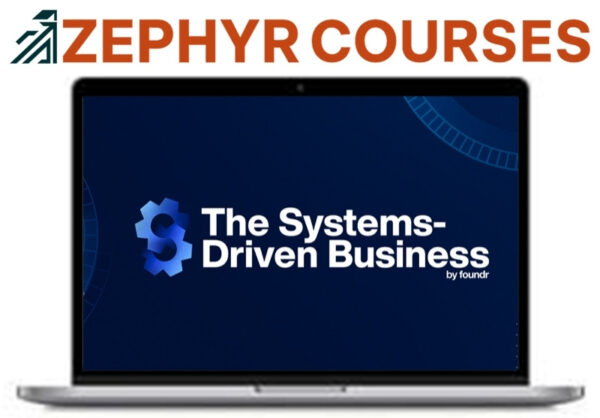Description
Embracing Process Over Heroics
Many believe that businesses thrive on extraordinary efforts from a few standout individuals, but lasting success comes from reliable processes everyone can follow.
When you shift from heroic leadership to a process mindset, you empower your team instead of relying on single-person heroics. This shift promotes efficiency focus, as everyone knows the steps to follow for consistent results.
With clear adaptability strategies, your team can adjust processes as challenges arise, ensuring resilience.
Building a collaboration culture means people work together, leveraging innovation frameworks rather than improvising solutions under pressure. Effective risk management and strong accountability practices become second nature, not afterthoughts.
By tracking performance metrics, you measure success objectively, driving ongoing improvement and sustainable growth.
Make process your foundation, not heroics.
Standardizing Core Workflows
You need to set clear process benchmarks so everyone knows what great work looks like.
By documenting key procedures, you make sure tasks are completed the right way every time.
This step brings consistency and reliability to your core operations.
Defining Process Benchmarks
A single, clearly defined process benchmark can transform repetitive tasks into streamlined, reliable workflows. When you set benchmarks, you’re establishing clear standards for how work should be performed every time.
Start by using process evaluation to identify where your workflows can be improved. Analyze each step, spot bottlenecks, and compare performance metrics to your business objectives. This lets you set achievable, measurable benchmarks that everyone can follow.
With these benchmarks in place, you’ll know exactly what success looks like for each workflow. Teams can compare current performance against these standards and quickly identify areas that need adjustment.
Ultimately, process benchmarks help you maintain consistency, drive efficiency, and simplify training as your business scales. Don’t leave quality to chance—set benchmarks and watch your workflows improve.
Documenting Key Procedures
Once you’ve set clear process benchmarks, it’s time to turn those standards into actionable routines by documenting your key procedures.
Effective procedure documentation transforms best practices into repeatable workflows, ensuring everyone operates from the same playbook. You need to capture both the “how” and the “why” behind each process, so your team understands not just what to do—but the reasoning that drives each step.
Process mapping clarifies roles and responsibilities, eliminating confusion and bottlenecks.
Here’s how to standardize your core workflows:
- Identify core tasks: Pinpoint processes critical to your business’s success.
- Map each process: Use diagrams for visual clarity, highlighting key decision points.
- Write clear instructions: Detail every step, using simple language.
- Review and update: Regularly revisit procedure documentation for accuracy and improvements.
Automating Repetitive Tasks
While many daily business activities can seem trivial, repetitive tasks often consume valuable time and distract from core priorities. You need to start with repetitive task identification, using efficiency assessment methods to pinpoint where automation will have the most impact.
Next, apply task prioritization strategies and workflow optimization techniques to streamline operations. Choose automation software that fits your needs, considering both process automation benefits and technology integration challenges.
Incorporate time management tools to monitor improvements and reallocate saved time to higher-value work. Don’t overlook employee training programs; your team must understand new systems to guarantee success.
Use task delegation practices to further reduce manual workload while maintaining quality. By automating repetitive tasks, you’ll free up resources and boost business efficiency without sacrificing consistency.
Empowering Teams Through Documentation
Clear, accessible documentation turns scattered knowledge into a powerful asset that every team member can leverage.
When you put strong documentation practices in place, you drive team empowerment and guarantee knowledge sharing becomes second nature.
This approach fosters process ownership, encourages collaborative documentation, and brings process clarity to every corner of your business.
You’ll see better team alignment and create accessible resources for continuous learning.
To empower your team through documentation, focus on these essentials:
- Standardize documentation practices for consistent knowledge management.
- Promote collaborative documentation so everyone contributes and refines processes.
- Assign clear process ownership to boost accountability and expertise.
- Make all resources accessible to support seamless knowledge sharing and team alignment.
With these steps, your team operates with clarity and confidence.
Fostering a Culture of Continuous Improvement
You’ll see real progress when you embrace small, steady changes in your processes.
Encourage everyone on your team to share lessons learned and seek out new knowledge together.
This way, improvement becomes part of your daily routine, not just a once-a-year project.
Embracing Incremental Process Changes
Although large-scale transformations may seem appealing, lasting business growth often relies on small, consistent improvements. By embracing incremental innovation, you avoid the risks and disruptions of sweeping changes, while steadily moving your business forward.
Process adaptation isn’t about reinventing the wheel—it’s about spotting opportunities for minor tweaks that add up over time. When you cultivate this mindset, your team builds confidence in change, and your systems become more resilient and efficient.
Here’s how you can make incremental process changes work for you:
- Identify small pain points in your workflow regularly.
- Test simple solutions before committing to major adjustments.
- Measure the impact of each change to guarantee meaningful improvement.
- Encourage feedback to refine and adapt processes continuously.
Every small step compounds toward significant progress.
Encouraging Teamwide Learning
When your team embraces learning as an ongoing practice, every challenge becomes an opportunity for growth. You foster a culture of continuous improvement by making knowledge sharing a core value.
Use collaborative learning strategies, like peer training and cross functional workshops, to guarantee everyone benefits from diverse skills and perspectives. Implement mentorship programs that pair experienced staff with newer members to accelerate skill development.
Create feedback loops so everyone can learn from successes and setbacks. Equip your team with access to learning platforms and resource libraries, making it easy to pursue new knowledge at their own pace.
Encourage team challenges that require creative problem-solving and collaboration. By integrating these systems, you empower your entire team to adapt, innovate, and drive your business forward.
Leveraging Data for Smarter Decisions
By tapping into the wealth of data your business generates daily, you can replace guesswork with informed, confident choices.
Data analytics lets you uncover patterns, while decision frameworks guarantee you weigh options systematically. Predictive modeling helps you anticipate trends before they emerge, and insights generation sharpens your competitive edge.
Use powerful tools like data visualization and business intelligence platforms to turn raw numbers into actionable information. Track performance metrics to measure what truly matters, and let trend analysis guide your strategic direction.
Risk assessment and scenario planning become far more robust when they’re rooted in real numbers, not hunches.
- Collect relevant data to strengthen your business intelligence.
- Visualize data for easier insights generation.
- Apply predictive modeling for proactive decision-making.
- Incorporate scenario planning and risk assessment for resilience.
Scaling Operations Without Sacrificing Quality
As your business grows, you need to scale without letting quality slip.
You can do this by standardizing core processes, using automation tools, and training your team for consistency.
These steps help you handle more work while keeping your standards high.
Standardizing Core Processes
Every successful business relies on a foundation of standardized core processes to scale efficiently and consistently deliver quality. You can’t keep pace with growth if your team isn’t following clear, reliable workflows.
Start by documenting your main activities through process mapping. This lets you visualize every step and highlight inefficiencies. Next, focus on workflow optimization to remove bottlenecks and guarantee everyone knows their responsibilities.
Standardizing these processes sets clear expectations and reduces costly errors as you expand. Here’s how you can implement standardization:
- Identify repetitive tasks that impact customer experience or product quality.
- Use process mapping to document every step and responsibility.
- Optimize workflows by eliminating redundancies and streamlining handoffs.
- Train your team to follow standardized procedures and monitor compliance.
Leveraging Automation Tools
When you want to scale your business without losing control over quality, automation tools become essential allies. You need to stay ahead of automation trends to guarantee your systems remain competitive and efficient.
Careful tool selection is vital; prioritize software scalability and robust integration strategies to connect your existing platforms seamlessly. Focus on workflow optimization to eliminate bottlenecks and encourage team collaboration, making certain everyone’s on board with new processes for higher user adoption.
Conduct a thorough cost benefit analysis before investing, weighing upfront costs against long-term gains. Don’t overlook data security; choose tools that safeguard sensitive information and support compliance.
Finally, set up performance monitoring to track results, allowing you to adjust and refine your automation strategy as your business grows.
Training for Consistency
A well-designed training program guarantees your team delivers consistent results, even as your business expands.
To scale operations without sacrificing quality, you need to implement effective training methodologies and ongoing skill assessment. It’s not just about onboarding; it’s about creating a culture where learning is continuous and standardized across every role.
Here’s how you can guarantee consistency:
- Standardize Training Materials: Create clear, accessible documentation and videos for each process.
- Leverage Blended Learning: Combine online modules with hands-on, in-person sessions for thorough understanding.
- Regular Skill Assessment: Routinely evaluate employee performance to identify gaps and tailor future training.
- Feedback Loops: Encourage team feedback on training methods and update materials based on real-world challenges.
With these steps, you’ll maintain excellence as your team grows.
Integrating Tools for Seamless Collaboration
Countless businesses rely on multiple digital tools, but integrating them effectively is what truly drives seamless collaboration.
You need to connect collaboration platforms, communication tools, and project management software so your team can work as one unit. With strong workflow integration, you’ll streamline your processes and guarantee real time updates reach everyone instantly.
Cloud solutions make it easy for team members to access the latest information, no matter where they are. When your systems support software interoperability, you reduce friction and boost productivity.
Encourage team engagement by making certain feedback loops are built into your virtual teamwork environment. With these integrations, your team can move faster, communicate better, and stay aligned on priorities—essential factors for any systems-driven business that wants to thrive.
Aligning Systems With Company Vision
Even the most sophisticated systems fall short if they don’t reflect your company’s core vision. You need purpose driven systems that reinforce mission clarity and elevate value integration throughout every process.
Vision alignment guarantees that every workflow supports strategic coherence and organizational harmony. When your systems embody culture alignment and leadership alignment, you’ll drive goal synchronization and accelerate vision execution across all levels.
To achieve this, focus on:
- Establishing mission clarity: Define and communicate your vision before embedding it into your systems.
- Guaranteeing leadership alignment: Get leaders on board to champion and model the company’s values.
- Integrating core values: Bake your values into procedures and decision-making protocols.
- Aligning goals and actions: Synchronize team efforts so daily actions reinforce long-term vision.
When systems mirror your vision, alignment becomes your competitive edge.
Measuring and Iterating for Sustainable Growth
Robust systems thrive on continuous measurement and iteration to fuel sustainable growth. You need to track growth metrics and apply performance analytics to identify what’s working and where you can improve.
Use feedback loops to gather customer insights, then act quickly on this information to make strategic pivots that align with shifting market trends. Regular risk assessments help you anticipate obstacles before they threaten progress.
Review resource allocation to guarantee your efforts support your scalability plans, maximizing impact without waste. Encourage team engagement by involving everyone in the process of reviewing data and refining systems.
With each cycle of measurement and iteration, you’ll strengthen your business’s ability to adapt, grow, and outpace competitors while maintaining a clear focus on long-term sustainability.
Frequently Asked Questions
What Industries Has Vinay Patankar Previously Worked In?
You’ll find Vinay Patankar’s experience spans technology startups and business consulting. He’s worked in industries focused on tech innovation and operational efficiency, giving him a strong foundation to understand business processes, automation, and organizational growth.
How Did Vinay Patankar Start His Entrepreneurial Journey?
You’ll find Vinay Patankar’s entrepreneurial inspiration sparked early, driven by tech and automation interests. As you explore his journey milestones, you’ll notice he launched ventures, learned from setbacks, and built expertise before achieving success in business process automation.
What Are Vinay Patankar’S Educational Qualifications?
You’re curious about Vinay Patankar’s educational background and academic achievements. He holds a Bachelor’s degree in Business from the University of Technology Sydney, which laid the foundation for his entrepreneurial skills and future ventures.
Has Vinay Patankar Published Any Books on Business Systems?
If you’re looking for book insights or business frameworks from Vinay Patankar, you’ll find that he hasn’t published a book specifically on business systems. Instead, he shares his expertise through articles, podcasts, and online resources.
What Are Some Challenges Vinay Patankar Faced Building Process Street?
You’ll notice Vinay Patankar faced scaling challenges as Process Street grew, balancing rapid growth with maintaining strong team dynamics. You’d see him adapt processes, hire carefully, and constantly refine company culture to keep everyone aligned and productive.










 Adam Grimes – Tradecraft: Your Path to Peak Performance Trading
Adam Grimes – Tradecraft: Your Path to Peak Performance Trading  A-Z Dropshipping Course – The Yard
A-Z Dropshipping Course – The Yard  Agency Fast Track 2024 Recordings
Agency Fast Track 2024 Recordings